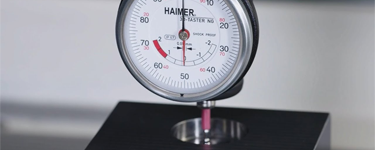Don't have an account?
Creating an account has many benefits: check out faster, keep more than one address, track orders and more.
From £438.90 £365.75
From £570.00 £475.00

3D Testers, or touch probes, are used to determine the zero position, center of a bore and measurement of a work piece. From market leading high quality German manufacturer Haimer.
Creating an account has many benefits: check out faster, keep more than one address, track orders and more.
From £438.90 £365.75
From £570.00 £475.00
What are 3D sensors and how are they used?
A 3D sensor follows the same principle as an edge finder, in that they are used for finding a workpiece edge of a workpiece, component or stock. However, unlike edge finders, a 3D sensor can also measure flatness and check bores in the X, Y and Z axis (so more like a dial test indicator). Another benefit of 3D sensors versus edge finders are that no calculations are necessary relating to the probe’s ball diameter. The user just winds the spindle to the true (zero) position. This saves time and improves accuracy.
Most 3D sensors feature a dial or digital readout which will show any deviation in the flatness or the workpiece edge once the zero position is found. 3D sensors utilise a ball-shaped probe to perform readings. On most models, these probes are replaceable. When a 3D sensor is pushed too far, our 3D sensors feature a fracture point to protect the mechanism which underpins the sensor’s operation. This means that the probe will snap instead of damaging this vital sensor mechanism.
What types of 3D sensors are there?
The main differentiator between 3D sensors is the display output. Whilst edge finders mainly feature either a ‘beep’ or light-up LED, 3D sensors feature an actual scale which can be displayed either via a dial or digital readout. This readout gives 3D sensors more versatility than edge finders, whilst also making them better for referencing. We find the dial display is the most popular and is by far the best selling style Cutwel supply.
Beyond the style of readout, there are different styles of model which perform slightly different functions. This includes a ‘centro’ style indicator which doubles as a centring indicator for centring bores and arbors. Other models include a ‘zero master’ style ideal for smaller machines and a digital model for both metric and imperial measurements.
IP class protection in 3D sensors
A selection of our 3D sensors are available with two different protection classes from dust or water/coolant:
IP64 - Fully dust proof and protected against splashing water or coolant (but not submerged in it).
IP67 - Fully dust proof and protected against water immersion for a maximum of 30 minutes.
Can 3D sensors be calibrated?
3D sensors can be calibrated to a UKAS standard. UKAS (United Kingdom Accreditation Service) are the nationally appointed organisation to assess certification, testing, inspection and calibration against agreed standards.
UKAS calibrated 3D sensors are supplied with an official testing certificate that confirms the measuring tool has been manufactured to and operates at the high standards required. Please contact our sales team today for any enquiries about purchasing measuring tools with UKAS calibration.